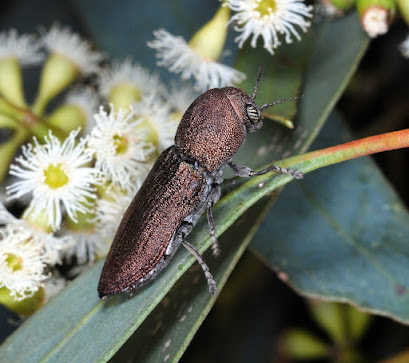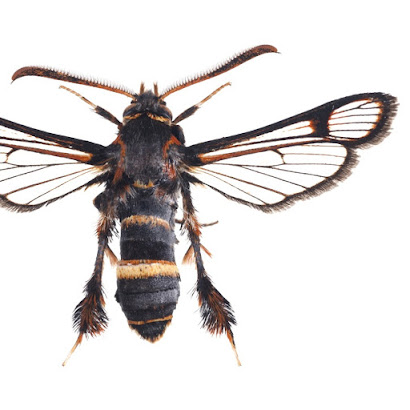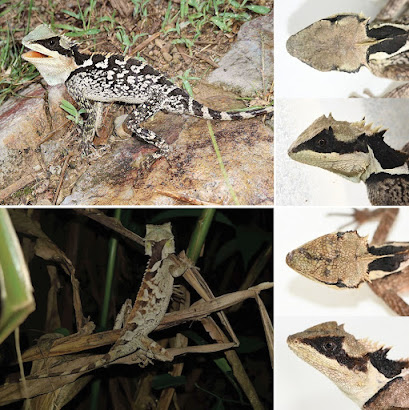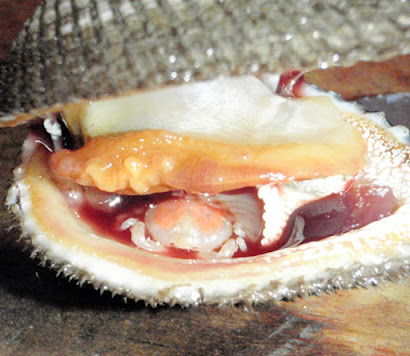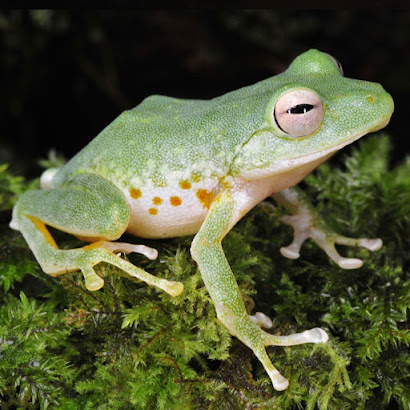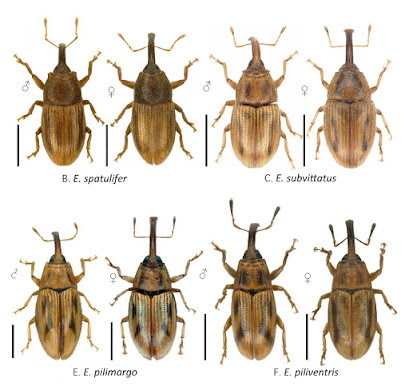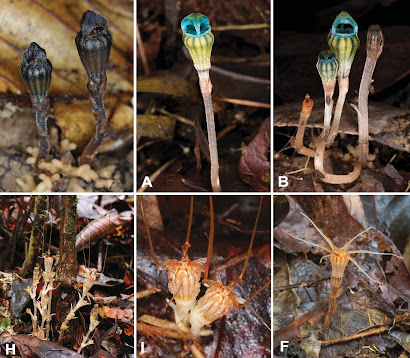[Most Recent Entries] [Calendar View]
Monday, August 17th, 2020
| Time | Event | ||||
| 2:16a | [Entomology • 2020] A Revision of the Genus Bubastes Laporte & Gory, 1836 (Coleoptera: Buprestidae)
Abstract Taxonomic revision of the genus Bubastes Laporte & Gory, 1836. Thirteen new species are described: Bubastes barkeri sp. nov. (New South Wales, Queensland, Victoria), B. deserta sp. nov. (South Australia), B. dichroa sp. nov. (Western Australia), B. flavocaerulea sp. nov. (New South Wales, Queensland), B. hasenpuschi sp. nov. (Queensland), B. iridiventris sp. nov. (Western Australia), B. iris sp. nov. (Western Australia), B. macmillani sp. nov. (Western Australia), B. magnifica sp. nov. (Queensland, New South Wales), B. michaelpowelli sp. nov. (Western Australia), B. pilbarensis sp. nov. (Western Australia), B. remota sp. nov. (Northern Territory) and B. viridiaurea sp. nov. (Western Australia). The following seventeen new synonyms are proposed: Bubastes thomsoni Obenberger, 1928, syn. nov. = B. australasiae Obenberger, 1922, B. olivina Obenberger, 1920, syn. nov. = Neraldus bostrychoides Théry 1910, B. boisduvali Obenberger, 1941, syn. nov. = B. erbeni Obenberger, 1941, B. borealis Obenberger, 1941, syn. nov. = B. globicollis Thomson, 1879, B. laticollis Blackburn, 1888, syn. nov. = B. globicollis Thomson, 1879, B. simillima Obenberger, 1922, syn. nov. = B. globicollis Thomson, 1879, B. obscura Obenberger, 1922, syn. nov. = B. inconsistans Thomson, 1879, B. septentrionalis Obenberger, 1941, syn. nov. = B. inconsistans Thomson, 1879, B. viridicupraea Obenberger, 1922, syn. nov. = B. inconsistans Thomson, 1879, B. blackburni Obenberger, 1941, syn. nov. = B. kirbyi Obenberger, 1928, B. chapmani Obenberger, 1941, syn. nov. = B. kirbyi Obenberger, 1928, B. aenea Obenberger, 1922, syn. nov. = B. niveiventris Obenberger, 1922, B. saundersi Obenberger, 1928, syn. nov. = B. odewahni Obenberger, 1928, B. occidentalis Blackburn, 1891, syn. nov. = B. sphaenoida Laporte & Gory, 1836, B. persplendens Obenberger, 1920, syn. nov. = B. sphaenoida Laporte & Gory, 1836, B. splendens Blackburn, 1891, syn. nov. = B. sphaenoida Laporte & Gory, 1836 and B. strandi Obenberger, 1920, syn. nov. = B. suturalis Carter, 1915. Neotype is designated and redescribed for Bubastes cylindrica W. J. Macleay, 1888 and lectotypes are designated for Bubastes thomsoni Obenberger, 1928 and B. leai Carter, 1924. Morphological characters of the genus are presented and all species are illustrated (incl. historical types) and a key is provided for all species of the genus. Svatopluk Bílý and Mark Hanlon. 2020. A Revision of the Genus Bubastes Laporte & Gory, 1836 (Coleoptera: Buprestidae). Zootaxa. 4832(1); 1-75. DOI: 10.11646/zootaxa.4832.1.1 | ||||
| 2:45a | [Entomology • 2020] The Clearwing Moths (Lepidoptera, Sesiidae) of Australia, New Guinea and the Pacific Islands
Abstract In this study, the clearwing moths (Sesiidae) of Australia, New Guinea and the Pacific Islands are reviewed. A total of 58 species belonging to 18 genera are recognized as native to this region. This includes the following new species and genera: Lophocnema mackeyi spec. nov. (Australia), Oligophlebia insurgia spec. nov. (New Guinea), Micrecia capillaria spec. nov. (New Guinea), Micrecia kuukuyau spec. nov. (Australia), Micrecia hawkei spec. nov. (Australia), Lamellisphecia sanguinea spec. nov. (New Guinea), Specodoptera hiltoni spec. nov. (New Guinea), Specodoptera hiltoni hibernia spec. nov., ssp. nov. (New Guinea), Aegerosphecia rufea spec. nov. (New Guinea), Melittia flanneryi spec. nov. (New Guinea), Melittia pyroptella spec. nov. (Australia), Archaeosesia milleri gen. nov. et spec. nov. (New Guinea), Nokona kungkay spec. nov. (Australia), Nokona bipora spec. nov. (New Guinea), Pseudosesia muyuae spec. nov. (New Guinea), Pseudosesia sumoensis spec. nov. (New Guinea), Pseudosesia sepikensis spec. nov. (New Guinea), Paranthrenella terminalia spec. nov. (New Guinea), Paranthrenella brandti spec. nov. (New Guinea), Paranthrenella lelatensis sp. nov. (New Guinea). Furthermore, 35 new combinations and each four new generic and species synonyms are introduced, while two genera and three species are resurrected from synonymy. Each 4 taxa at the species and genus levels are considered new synonyms. Six species are listed that originally derive from Africa, Europe, Northern Africa or Central America and were introduced into Australia or some of the Pacific Islands accidentally or deliberately. Melittia pyroptella spec. nov. Axel Kallies. 2020. The Clearwing Moths (Lepidoptera, Sesiidae) of Australia, New Guinea and the Pacific Islands. Zootaxa. 4833(1); 1-64. DOI: 10.11646/zootaxa.4833.1.1 | ||||
| 3:37a | [Herpetology • 2020] Acanthosaura liui • A New Species of the Genus Acanthosaura (Squamata, Agamidae) from Yunnan, China, with Comments on its Conservation Status
Abstract A new species of Acanthosaura from Yunnan, China, is described based on morphological and genetic data. The new species can be separated from all other species of the genus by having a different shape of the black eye patch, a different coloration of the postorbital and occipital spines and nuchal crest, and a different color of the gular pouch. Genetically, uncorrected sequence divergences of COI between the new species and investigated congeners ranged from 16.12% to 24.11%. The conservation status of the new species is also discussed. Keywords: endangered, Honghe, lizard, taxonomy Acanthosaura liui sp. nov. Diagnosis: Body size medium (SVL 85.1–95.9 mm), postorbital and occipital spines present; relatively developed gular pouch; scales on flanks randomly intermixed with medium and large scales; nuchal crest gradually developed posteriorly, first nuchal crest spine shortest and last nuchal crest spine longest; diastema between nuchal and dorsal crests present; dorsal crest underdeveloped, composed of enlarged, pointed scales beginning at shoulder region and decreasing regularly in size; tail 1.47–1.77× SVL; number of subdigital lamellae on the fourth finger 16–18 and the fourth toe 22–25; black nuchal collar present; black eye patch extending from nostril through orbit posteriorly and downwards through tympanum and then posteriorly and upwards meeting diamond-shaped black nuchal collar on nape; black oblique folds anterior to forelimb insertions present and not meeting black nuchal collar; anterior nuchal crest spines and dorsal sides of postorbital and occipital spines light colored, posterior nuchal crest spines and ventral sides of postorbital and occipital spines black; gular pouch light blue; tongue and inside of mouth yellow. Etymology: The specific epithet is dedicated to the renowned herpetologist Prof. Chengzhao Liu (30.9.1900–9.4.1976), in recognition of his great contributions to herpetological research in China.
Distribution: After our extensive field investigation, Acanthosaura liui sp. nov. is only recorded in Jianshui County, Gejiu City, and Shiping County, Honghe Autonomous Prefecture, Yunnan, China. Natural history: The specimens of Acanthosaura liui sp. nov. were all found at night while they were asleep on trees beside rivers. At the type locality, we found seven other species of reptiles, namely Hebius atemporale (Bourret, 1934), Ophiophagus hannah (Cantor, 1836), Oreocryptophis porphyraceus (Cantor, 1839), Pareas margaritophorus (Jan, 1866), Ptyas major (Günther, 1858), P. nigromarginata (Blyth, 1854), and Sphenomorphus indicus (Gray, 1853), and three species of amphibians, namely Hyla annectans (Jerdon, 1870), Nidirana pleuraden (Boulenger, 1904), and Polypedates megacephalus Hallowell, 1861. Shuo Liu, Mian Hou, Mingzhong Mo and Dingqi Rao. 2020. A New Species of the Genus Acanthosaura (Squamata, Agamidae) from Yunnan, China, with Comments on its Conservation Status. ZooKeys. 959: 113-135. DOI: 10.3897/zookeys.959.54601 | ||||
| 4:06a | [Crustacea • 2020] Arcotheres ocularius • On the Identity of the poorly known Pea Crab, Pinnothera obesa Dana, 1852, and Description of A New Species of Arcotheres Manning, 1993 from the Southwest Pacific (Decapoda: Brachyura: Pinnotheridae)
Abstract The pinnotherid crab, Pinnothera obesa Dana, 1852, was originally described on the basis of material from Fiji, but its taxonomic status has long been obscure because the original description and figures are too brief and schematic by modern standards and the types are also lost. Examination of newly collected material from Fiji revealed the presence of two intertidal pinnotherid species assignable to the genus Arcotheres Manning, 1993, one of which is herein identified with Dana’s taxon. A neotype is designated for Arcotheres obesus n. comb. in the interest of nomenclatural stability, and a detailed redescription is given. Arcotheres obesus is morphologically similar to A. exiguus (Bürger, 1895) and A. rotundatus (Bürger, 1895), and differentiating characters are discussed. The species is also reported from Peninsular Malaysia. The second species is new to science, here described as Arcotheres ocularius, and is most similar to A. palaensis (Bürger, 1895) and A. arcophilus (Bürger, 1895). The new species is also recorded from Lombok, Indonesia. Arcotheres obesus and A. ocularius n. sp. are associated with bivalve mollusks of the genera Gafrarium spp. (Veneridae) and Anadara spp. (Arcidae), respectively. Keywords: Crustacea, Arcotheres ocularius, neotype, redescription, synonym Arcotheres ocularius Komai Tomoyuki, Kei Kawai and Peter K.L. Ng. 2020. On the Identity of the poorly known Pea Crab, Pinnothera obesa Dana, 1852, and Description of A New Species of Arcotheres Manning, 1993 from the Southwest Pacific (Decapoda: Brachyura: Pinnotheridae). Zootaxa. 4822(2); 221–247. DOI: 10.11646/zootaxa.4822.2.5 | ||||
| 4:37a | [Herpetology • 2020] Platymantis navjoti • A New Forest Frog of the Genus Platymantis (Anura: Ceratobatrachidae: subgenus Tirahanulap) from Leyte and Samar islands, eastern Philippines
Abstract We describe a new species of frog of the genus Platymantis Günther (subgenus Tirahanulap), from the east-central regions of the Philippines. It belongs to the the previously-defined P. hazelae Group) based on morphological and bioacoustic datasets. The new species is phenotypically and ecologically most similar to members of Tirahanulap, an assemblage of small-bodied arboreal frogs inhabiting montane forests of the central and northern islands of the Philippine archipelago. The new species represents the first taxon in the Cloud Frog species known from the biogeographically unique Mindanao Pleistocene Aggregate Island Complex. Particularly susceptible to local extirpation following deforestation, all known species of Tirahanulap are important indicator species for environmental and conservation assessments, making this new species not only an exceptional addition to Philippine biodiversity but also an important symbol for conservation initiatives in the region. Keywords: Amphibia, endemism, forest conservation, Pleistocene Aggregate Island Complex, Platymantis hazelae Group, protected areas, Shrub Frogs Arvin C. Diesmos, Brett R. Scheffers, Neil Aldrin D. Mallari, Cameron D Siler and Rafe M. Brown. 2020. A New Forest Frog of the Genus Platymantis (Amphibia: Anura: Ceratobatrachidae: subgenus Tirahanulap) from Leyte and Samar islands, eastern Philippines. Zootaxa. 4830(3); 573–591. DOI: 10.11646/zootaxa.4830.3.6 | ||||
| 2:16p | [Entomology • 2020] Revision of the Palm-pollinating Weevil Genus Elaeidobius Kuschel, 1952 (Curculionidae, Curculioninae, Derelomini) with Descriptions of Two New Species
Keywords: pollination; Elaeis guineensis; new species; Afrotropical Region; integrative taxonomy Julien M. Haran, Laurence Beaudoin-Ollivier, Laure Benoit and Guillermo Kuschel. 2020. Revision of the Palm-pollinating Weevil Genus Elaeidobius Kuschel, 1952 (Curculionidae, Curculioninae, Derelomini) with Descriptions of Two New Species. European Journal of Taxonomy. 684; 1–32. DOI: 10.5852/ejt.2020.684 | ||||
| 3:45p | [Botany • 2020] Thismia: the Rarest of the Rare? Ranges of some Bornean Species are Much Larger than previously believed.
Abstract Fairy lanterns (Thismia; Thismiaceae, Dioscoreales) are believed to be extremely rare and narrowly endemic plants. Despite that, many new Thismia populations have been recently discovered in Borneo. These are summarized and discussed here and all twelve Bornean Thismia species with multiple localities are reviewed. New localities of T. brunneomitra, T. hexagona, T. neptunis, T. pallida and T. viridistriata are reported which considerably enlarge ranges of these species. New conservational statuses are proposed for T. brunneomitra, T. goodii, T. hexagona and T. neptunis. New or unpublished localities are also reported for T. cornuta and T. goodii. Although the known within-species morphological variability is extended only little or not at all by these finds, geographically distant populations often exhibit relatively large genetic differences, in some cases similar to those among distinct species (namely T. brunneomitra and T. minutissima). The new data show that, at least in some tropical species of Thismia, we can expect quite normal type of distribution with multiple localities over relatively large geographical areas. Keywords: conservation status, Dioscoreales, distribution, Malesia, tropical forest, Monocots  Martin Dančák, Michal Hroneš and Michal Sochor. 2020. Thismia: the Rarest of the Rare? Ranges of some Bornean Species are Much Larger than previously believed. Phytotaxa. 455(4); 245–261. DOI: 10.11646/phytotaxa.455.4.2 |
| << Previous Day |
2020/08/17 [Calendar] |
Next Day >> |
